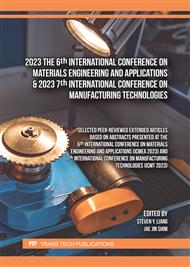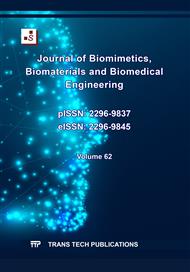p.1
p.9
p.15
p.21
p.27
p.33
p.43
p.51
p.63
Viability Base Gel as Potential for Fabricating Crassostrea gigas hydroxyapatite (HA-Crassostrea gigas shell) Gel for Dental Caries Repair
Abstract:
This study aims to create a gel base composition that has the potential to be combined with hydroxyapatite from the biogenic material Crassostrea gigas as a gel that can repair dental caries. The base gel composition consists of Na-CMC, guar gum, and glycerin which can dissolve the HA element without settling so that it can be applied well to the teeth. nano HA contained in Crassostrea gigas can potentially remineralize and improve caries in teeth. Therefore, it is inevitable that the base gel is safe to make composites with nano HA as a function of repairing dental caries. The potential of HA as a tooth remineralization material was proven by the SEM, FTIR, and XRD characterization of CaCO3 and CaO, which have sharp crystallinity. The base gel is safe to be applied to the bones of the teeth by the MTT test treatment. This proves that the base gel is not toxic and has high viability of 92.66% at a dose of 31.25 μg/mL. The IC50 value was 688.6 μg/ml. These results are safe to be applied with nano HA material and are safe to be applied to the bones of the teeth.
Info:
Periodical:
Pages:
15-20
Citation:
Online since:
October 2023
Authors:
Keywords:
Price:
Сopyright:
© 2023 Trans Tech Publications Ltd. All Rights Reserved
Share:
Citation:



